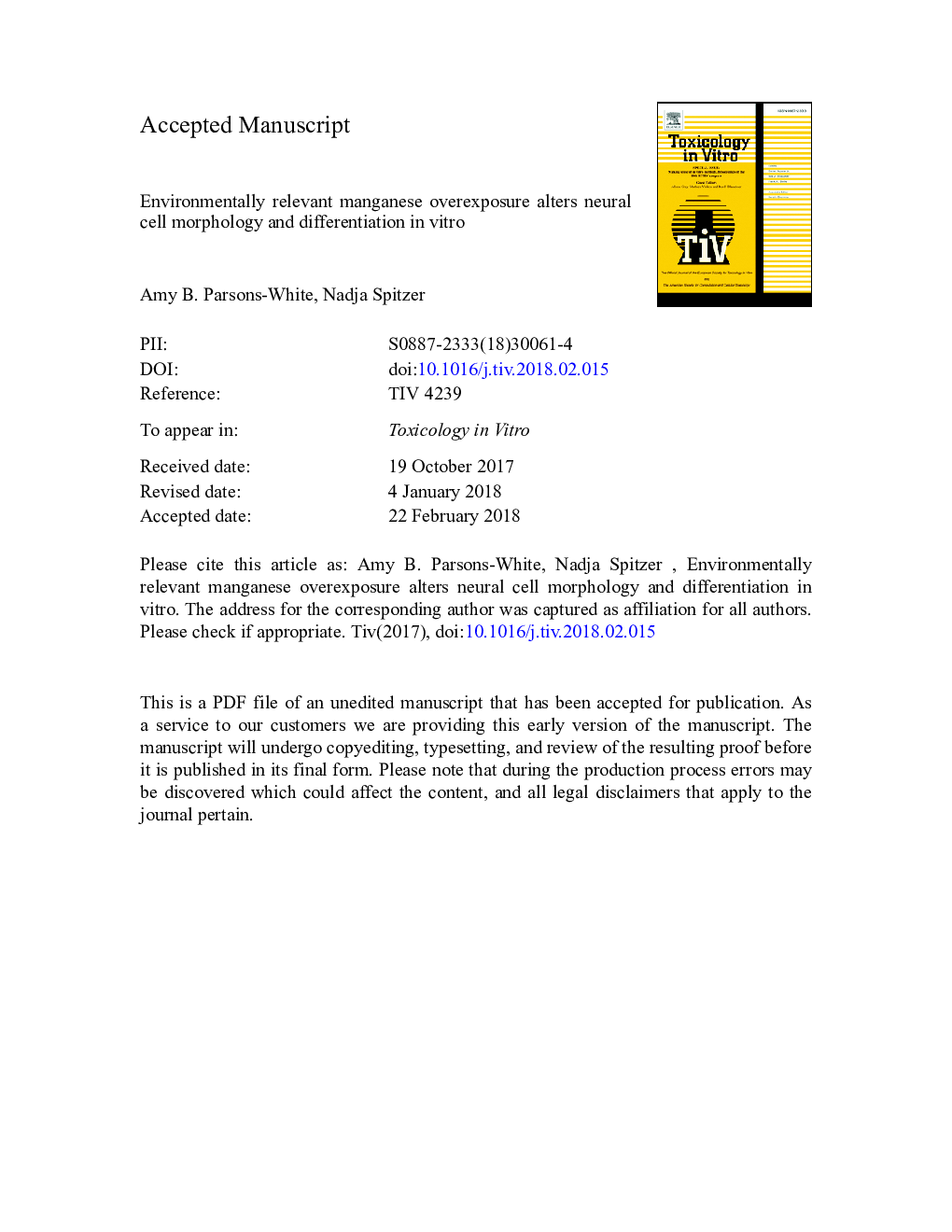| Article ID | Journal | Published Year | Pages | File Type |
|---|---|---|---|---|
| 8553816 | Toxicology in Vitro | 2018 | 26 Pages |
Abstract
Manganese (Mn) is a trace metal and micronutrient that is necessary for neurological function. Because of its ability to cross the blood brain barrier, excessive amounts of Mn are neurotoxic and can lead to a neurological disorder, manganism. Environmental overexposure to Mn correlates with impaired cognitive development in children. Though symptoms of manganism and overexposure are well defined, the changes in cellular mechanisms underlying these symptoms are not fully understood. We used cultured adult neural stem cells (NSCs) from young adult rats as an accessible model to investigate the effect of Mn on cellular mechanisms underlying neural differentiation. Concentrations of Mn below current EPA limits caused a dose- and time-dependent collapse of neurites and restructuring of cellular morphology. This effect was confirmed in B35 neuroblastoma cells. These findings indicate that Mn alters cytoskeleton dynamics during differentiation. In addition, Mn overexposure caused downregulation of DCX, a neuronal migration marker, and GFAP, a neural stem cell and astrocyte marker, in NSCs. We conclude that environmentally relevant concentrations of Mn impair cytoskeletal structure and morphology, and may impair differentiation in NSCs. These effects of Mn overexposure on brain cell function could underlie manganism and neurocognitive and developmental defects associated with environmental Mn overexposure.
Related Topics
Life Sciences
Environmental Science
Health, Toxicology and Mutagenesis
Authors
Amy B. Parsons-White, Nadja Spitzer,
